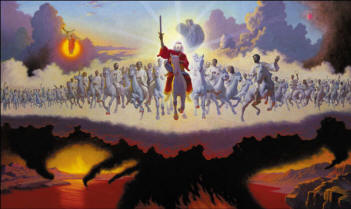Pope Francis to tread careful path on Mid-East visit
Pope
Francis sets out from Rome this weekend on his first visit to the
Middle East as pontiff, specifically to the lands designated as "Holy"
not only by the world's Christians, but also by members of the two other
major monotheistic faiths.
He will deliver a total of 13 speeches, all in Italian, which will be translated into the other five main languages used by the Vatican: English, French, German, Spanish and Portuguese. Translations will also be offered into Arabic in Amman and Bethlehem, and into Hebrew in Jerusalem.
Pope Francis' native language is Spanish, but he normally communicates in fluent Italian; he is not comfortable speaking or working in English.
Old friends
Pope Francis will in fact be the fourth leader of the Roman Catholic Church to visit Jerusalem, after Popes Paul VI, John Paul II and Benedict XVI, who went there in 2009.
The Pope has co-authored a book with his Jewish friend and was equally close to his Muslim colleague when he was archbishop in the Argentine capital.
Vividly aware of the potential political and religious minefields awaiting him during this journey, he has prepared himself well for his second overseas sortie and can turn to his friends for instant advice.
The official reason for the Pope's journey is in fact to mark the 50th anniversary of the historic meeting in Jerusalem between Pope Paul VI and the head of the Orthodox Church, Patriarch Athenagoras.
Pope Francis will have no fewer than four separate meetings in Jerusalem with Athenagoras's successor, Bartholomew, "first among equals" in the Orthodox world.
Although it is highly unlikely that there will be any spectacular announcement of reunion, Pope Francis's gesture of holding a joint prayer meeting with the head of the Orthodox Church in the Church of the Holy Sepulchre - the place where, according to tradition, Jesus Christ was laid to rest after his crucifixion - will be a remarkable event.
It follows his bold decision to invite Bartholomew to the Vatican for his official inauguration last year, and it means that efforts to re-establish Christian unity are high up on the list of Francis's priorities.
Christian exodus
The Pope's namesake, Saint Francis, never actually made it to Jerusalem, or to the Church of the Holy Sepulchre.
He did however travel as far as Acre - now part of Israel - in 1219, laying the foundations for a Franciscan presence in the Middle East which has, somewhat miraculously, endured until this day.
However, they have been denuded of their Christian heritage to the extent that one leading local Catholic churchman has described the Holy Land as developing into a sort of "spiritual Disneyland", full of tourist attractions but increasingly devoid of religious meaning because of the departure of much of the former indigenous Christian population.
The Christian exodus extends over a wide area of the Middle East, not only from the Palestinian territories.
Two of the oldest Christian communities in the Middle East, the Chaldean Catholics of Iraq, and the Syrian Catholics have been decimated by war.
At the end of the British mandate in Palestine in 1947, the population of Bethlehem was 85% Christian. Today it is 18% and continues to diminish as a result of a higher local Muslim birth-rate and emigration owing to tough economic conditions and Israeli security measures.
In the Old City of Jerusalem, the Christian presence is now estimated at just 1.5%.
Among them is the Cenacle, a historic building in Jerusalem where Jesus is reputed to have taken part in the Last Supper with his Apostles on the eve of his crucifixion.
At his last scheduled event Pope Francis will celebrate Mass in the part of the building associated with the Last Supper.
But the situation is complicated by the fact that the same building is also sacred to both Jews and Muslims. The reputed burial place of King David is on the ground floor of the Cenacle, while a mosque is situated on the roof.
Treading carefully
So what are the stumbling blocks towards better relations between the Vatican and Israel?
The Vatican has remained single-mindedly in favour of a two state solution to the Israeli-Palestinian conflict and to the internationalisation of the city of Jerusalem in the name of religious freedom.
The conflicting demands of local politics and religion will be obvious to Pope Francis as he tries to tread carefully around his obstacle-strewn zigzag route between Amman, Bethlehem, Tel Aviv and Jerusalem.
Peace between Israelis and Palestinians has been one of the leitmotivs of his foreign policy pronouncements during the first year of his pontificate.
Now having met many world leaders face-to-face in addition to the main protagonists, he will have to decide how far he can go to try to shame both sides back to peace talks which came to a shuddering halt at the end of April.


















